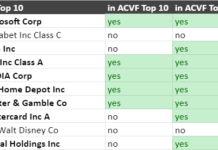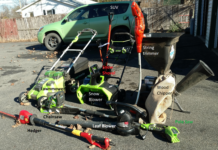A couple of weeks ago, I wrote about a recent report claiming that solar PV was going to be at the fore of the "cleantech revolution." I’ve never doubted solar PV’s potential. What I like most about it, besides the fact that it’s the most abundant energy form on Earth, is the ability for solar technologies to be deployed either through the building stock as a load-abatement measure or in large arrays of panels as solar parks. No other power generation technology can be scaled simultaneously through these two routes.
Besides investments in Energy Conversion Devices (ENER) and Suntech Power (STP) in 2006, I’ve largely stayed away from solar PV stocks in the past two years. For one thing, the onslaught of coverage initiation from the sell-side has made it difficult to gain a real informational edge for a retail investor such as myself. Throw on top of that the onslaught of retail investor interest in the sector, and you’re starting to have a very unattractive asset class as far as I go. Investing in solar has become, over the past three years, either about momentum trading or the belief that incredibly rich valuations will endure for a while.
There’s no doubt that the bashing of solar stocks that has taken over the past few months has rekindled many people’s interest in the sector, including my own. Although from a fundamental point of view the ugliest is probably still to come for solar, there is no doubt that the space is looking a lot cheaper than it did six short months ago. With the overall market seeming like it’s begun the process of finding a bottom, is now a good time to consider entering the solar PV space for the long-run (>18 months)? Even though I do think solar will probably continue to underperform for a few more months, I have been thinking about re-entering the space as a long-term play since I mostly share the perspective put forth in the report. Moreover, since I’m a lousy market-timer, now seems like a good time to get in and I’d prefer to sit through a bit more downside than to let upside escape me because I haven’t timed my entry appropriately.
Since I haven’t been following the space closely over the past couple of years, and because there is a good deal of uncertainty out there, my preferred approach is to go with one of the two solar ETFs: the Claymore/Mac Global Solar Index ETF (TAN) or the Market Vectors/Van Eck Global Solar Energy ETF (KWT). This approach allows me not to have to do a detailed analysis of any one company in particular, a process which can be very time consuming for someone not intimately familiar with the sector. Moreover, the portfolio approach inherent to ETF investing allows for a spreading of risks. I’ve therefore conducted an analysis somewhat similar to the one I did for wind ETFs a few months ago.
Solar ETFs
|
Solar ETFs: Basic Metrics |
||
| Item | TAN | KWT |
| Expense ratio | 0.65% | 0.65% |
| # securities in portfolio | 25 | 35 |
| Weighted avg. PE | 34.5 (Sep. 30) | 33.97 (Oct. 31) |
| NAV/closing pr (12/12) | 0.987 | 1.008 |
As can be noted from the table above, the PE figures available are a bit outdated and are therefore not particularly useful. For the NAV/closing price, large discrepancies can provide interesting long (NAV>closing prices) or short (NAV<closing price) opportunities. In this case, neither shows a huge difference between asset value per unit and closing price. Both ETFs have the exact same expense ratio.
One of the key differences between these two securities is the number of stocks within each and the relative concentration of risk. For TAN with 25 stocks, the average holding accounts for 4.00% of total fund value, whereas for KWT with 35 the average holding accounts for 2.86% of total fund value. However, the top ten holdings make up about 64% of fund value for KWT versus roughly 58% for TAN – risk is therefore more concentrated at the top for KWT than it is for TAN. Top-ten holdings for both ETFs are as follows:
| Solar ETFs: Top-10 Holdings | |||
| TAN | Weight | KWT | Weight |
| First Solar Inc. | 11.21% | First Solar Inc. | 13.68% |
| Renewable Energy Corp AS | 6.95% | SolarWorld AG | 9.85% |
| MEMC Electronic Materials Inc. | 6.46% | Q-Cells S.E. | 7.85% |
| Solarworld AG | 5.66% | Suntech Power Holdings Co. Ltd. ADR | 5.94% |
| SunPower Corporation | 5.09% | Renewable Energy Corp. ASA | 5.06% |
| Q-Cells AG | 4.89% | Evergreen Solar Inc. | 5.01% |
| Energy Conversion Devices, Inc. | 4.60% | SunPower Corp. Cl A | 4.57% |
| Evergreen Solar, Inc. | 4.42% | PV Crystalox Solar PLC | 4.52% |
| Yingli Green Energy Holding Co. Ltd. ADR | 4.27% | Energy Conversion Devices Inc. | 3.95% |
| LDK Solar Co. Ltd. ADR | 4.20% | Yingli Green Energy Holding Co. Ltd. ADR | 3.86% |
|
TOTAL |
57.75% |
TOTAL |
64.29% |
The main thing I really wanted to examine was relative exposure to the various segments of the solar supply chain. At a broad level, my preference is for the ETF with the greatest exposure to the wafer, silicon cell and thin-film segments, all of which have higher barriers to entry because of larger technological requirements. I want to stay away from heavier weightings into the silicon end of the market because of the commodity nature of it, and the modules and installation ends of the market because of the low barriers to entry and relative labor-intensity. I thus classified stocks in the two ETFs into the following categories: silicon, wafer, cells, thin-film, module, installation, solar thermal, integrated and other. I created categories to account for the companies that span two segments, and companies that spanned three or more segments are considered integrated. "Other" is made up mostly of firms providing manufacturing technologies for solar firms.
| Solar ETFs: Segment Allocation | ||
| Segment | TAN (% fund value) | KWT (% fund value) |
| Silicon | 0.00% | 0.00% |
| Wafers | 16.62% | 9.47% |
| Cells | 11.61% | 14.11% |
| Thin-film | 15.81% | 17.87% |
| Modules | 2.64% | 3.44% |
| Installation | 0.00% | 3.20% |
| Cells & Modules | 10.63% | 8.66% |
| Modules & Installation | 4.66% | 5.25% |
| Integrated | 28.51% | 30.36% |
| Solar Thermal | 0.00% | 1.85% |
| Other | 9.53% | 5.82% |
| TOTAL | 100% | 100% |
Unsurprisingly, both firms have First Solar (FSLR), the recent poster boy for the solar PV sector’s success, as their top holding. Also unsurprisingly, the largest category for both is "Integrated", as more and more firms try to extend their reach up and down the supply chain. Both ETFs are overall quite heavily tilted toward pure-play solar stocks with little in the way of indirect plays. These two ETFs don’t provide as clear-cut an alternative to one another as do the wind ETFs. KWT has a slightly higher weighting in stocks in the "Modules" and "Installation" ends of the supply chain. Coupled with the higher concentration of fund value (i.e. risk) toward the top-ten holdings, that makes me lean toward TAN.
Decision
As someone who hasn’t followed the solar sector closely and am not intimately familiar with many of the companies, I’m hoping taking a position in one of the solar ETFs is a good way to benefit from the upside associated with solar’s long-term potential. These two ETFs are relatively similar in terms of supply chain segment allocation, and are likely to perform in a roughly similar fashion. As I said above, I’m leaning toward TAN and have put in a buy order for it. Barring a major recovery of the solar sector in 2009 that would make me want to take profit – something I believe has a small probability of occurring – my time horizon is at least 18 months. I’ll provide an update then.
DISCLOSURE: Charles Morand does not have a position in any of the ETFs discussed above, but has an open buy order on TAN.
DISCLAIMER: I am not a registered investment advisor. The information and trades that I provide here are for informational purposes only and are not a solicitation to buy or sell any of these securities. Investing involves substantial risk and you should evaluate your own risk levels before you mak
e any investment. Past results are not an indication of future performance. Please take the time to read the full disclaimer here.








